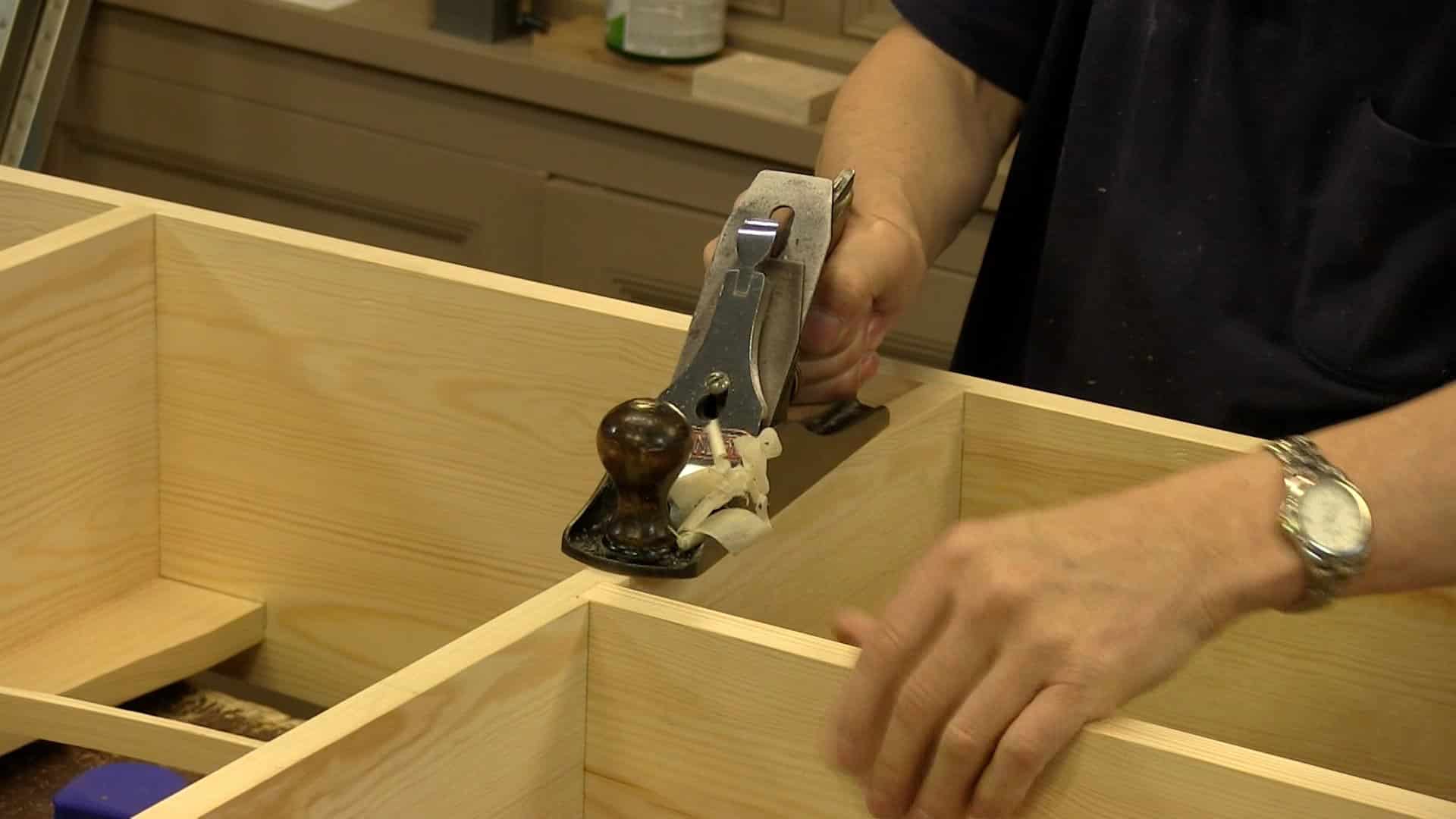Bookshelves: Episode 7
Posted 12 March 2014
This is an episode in a paid series. Want to watch it? You just need to sign up as a paid member, and you can enjoy this video and many other videos we think you will love.
Paul starts off this episode by fitting the dividers and gluing them in place. He then goes through the process of planing the back of the bookshelf in preparation for laying out the back frame.


thanks, love the quick and simple little fix when the divider fractured at the front .
My favorite part is the clamps he makes from the strips of wood. This is the same clamping technique I have seen a ukulele maker utilize. Brilliant.
I am glad to see I am not the only one with up to 1.5 millimeters of planing to do on my case backs after glue-up. 😉
Thanks all!
Paul and crew another great video. That face frame layout looks interesting, I am going have to study that one for a bit. This is defiantly going to be one stout book case or knick shelf.
Thanks for this !
Steve
excellent teacher ,meticulous to every detail ,explains every aspect to the novice ,and the quality of camera work to highlight pauls explanations is superb .i am really enjoy these classes. thanks
Love how these things come together.
Thanks for another great episode!
Sorry, but when I got to the case back frame and sheet I just brad and glued it. I couldn’t see (or rather didn’t have) the time spent on doing M&T. I know it would have been good practice though.
Paul, I’ve seen other videos online where the shelves on a bookshelf are connected to the sides with sliding dovetails made with an (electric) router. Do you ever use sliding dovetails instead of dados, or are they not worth the effort to do by hand? I guess you would need some sort of special plane to form them by hand?
Wonderful, as always! I especially like the way the shelf unit plans ahead to lean against the wall. Personally, especially on carpeted floors, I’ve often had trouble leveling pieces against a wall (i.e. book cases & Grandfather clocks). This method will solve that problem. Also, in reference to Chris’s question, I too have wondered about through dovetails with hand tools….
Your clamps appear to have wood filler strips which are not in the similar ones avaliable in the US. Did you add these and do ,you have any suggestions as to the best way to add these?
Robert,
Here is a link to a blog post Paul wrote about the clamps…
https://paulsellers.com/2011/11/4473/
There are also several posts on the forum about it. Just do a search and you should find plenty of information.
Robert,
Paul covered this on his blog.
https://paulsellers.com/2011/11/4473/
Regards,
Jason